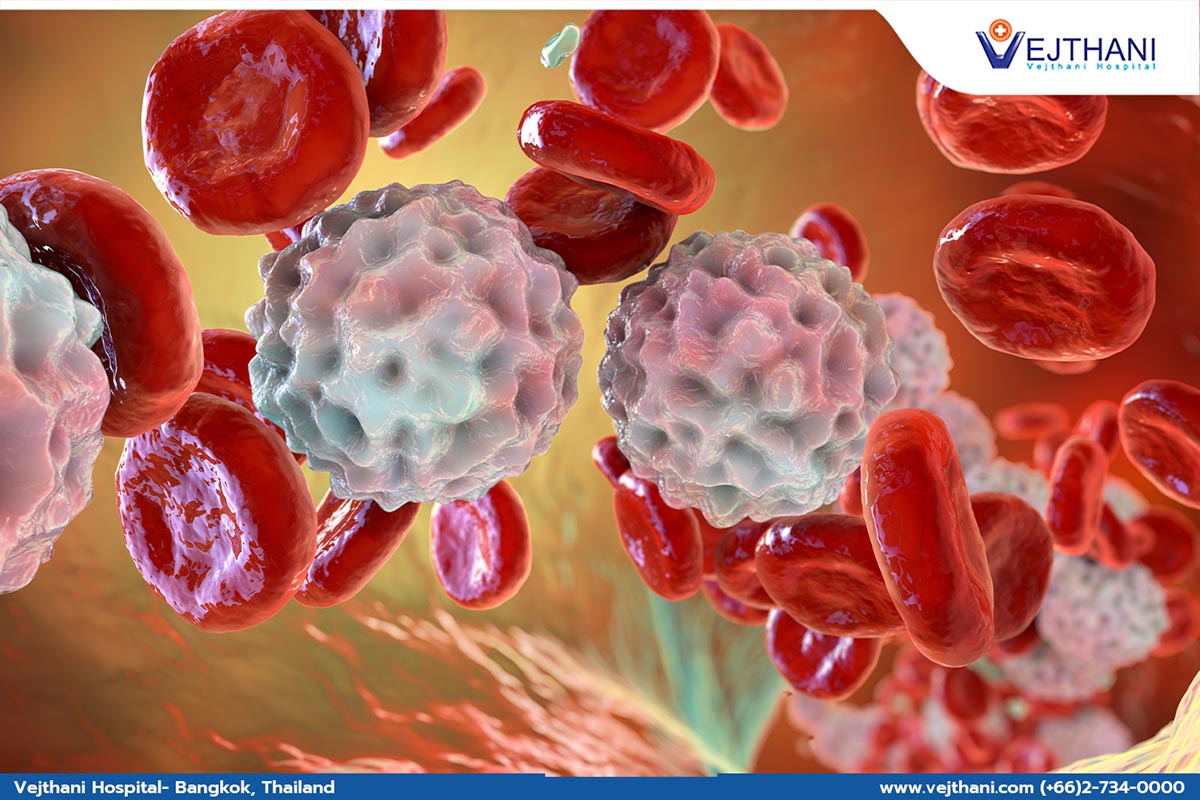
Acute Lymphoblastic Leukemia
Acute Lymphoblastic Leukemia (ALL) is a type of blood cancer that arises from the uncontrolled growth and accumulation of immature lymphocytes (a type of white blood cell) in the bone marrow. It is the most common form of leukemia in children, but it can also affect adults. Due to its rapid progression, early diagnosis and treatment are crucial for successful outcomes. This article aims to provide non-medical readers with an academic, yet accessible, understanding of ALL.
Causes
The exact cause of ALL remains unknown. However, researchers believe that it results from a combination of genetic and environmental factors. Some identified risk factors for ALL include:
- Genetic predisposition: Certain genetic disorders, such as Down syndrome, increase the risk of developing ALL.
- Family history: A family history of leukemia may increase the likelihood of developing the disease.
- Exposure to radiation: High levels of radiation exposure can raise the risk of ALL.
Symptoms
The symptoms of ALL can vary from person to person, but common signs include:
- Fatigue and weakness
- Fever
- Frequent infections
- Easy bruising and bleeding
- Bone and joint pain
- Swollen lymph nodes
- Weight loss
- Pale skin
- Shortness of breath
Diagnosis
The diagnostic process for ALL typically involves several steps:
- Physical examination: A doctor will assess the patient’s general health, check for swollen lymph nodes, and examine the liver and spleen for enlargement.
- Blood tests: A complete blood count (CBC) helps determine the number of white blood cells, red blood cells, and platelets in the blood. An abnormal CBC can indicate leukemia.
- Bone marrow aspiration and biopsy: A sample of bone marrow is collected from the hip bone and examined under a microscope to identify the presence of leukemia cells.
- Immunophenotyping: This test helps determine the specific type of leukemia by analyzing the proteins on the surface of the cancerous cells.
- Cytogenetic analysis: This test examines the chromosomes of the leukemia cells to identify any abnormalities that can influence treatment decisions.
Treatment
The primary treatment for ALL is chemotherapy, which involves the use of drugs to destroy cancer cells. Chemotherapy is typically administered in three phases:
- Induction: The goal of this phase is to kill as many leukemia cells as possible and achieve remission.
- Consolidation: This phase aims to eliminate any remaining leukemia cells and prevent relapse.
- Maintenance: This phase involves administering lower doses of chemotherapy drugs over a longer period to maintain remission.
In some cases, targeted therapy, immunotherapy, or radiation therapy may also be used in the treatment of ALL.
The role of Bone Marrow Transplantation
Bone Marrow Transplantation (BMT) is a remarkable medical innovation that has revolutionized the treatment of Acute Lymphoblastic Leukemia (ALL) and other blood cancers. It offers new hope and improved outcomes for patients who have not responded to conventional treatments. In this section, we will delve deeper into the essential role of BMT in treating ALL, highlighting its benefits and transformative potential.
A Lifesaving Option for High-Risk Patient
For patients with high-risk or relapsed ALL, BMT represents a potentially lifesaving treatment option. By replacing the patient’s diseased bone marrow with healthy stem cells from a donor, BMT effectively resets the patient’s immune system, allowing it to attack and eradicate any remaining leukemia cells. This process has the potential to significantly extend the patient’s life, and in many cases, achieve long-term remission or even a cure.
The Benefits of BMT: A Transformative Impact on Patients’ Lives
When successful, BMT can lead to long-term remission or even cure, profoundly improving the quality of life for patients with ALL. As the patient’s new immune system gradually takes over, they often experience a reduction in symptoms, increased energy levels, and a decreased reliance on frequent medical interventions. This transformative impact allows patients to return to their daily activities, reconnect with loved ones, and pursue their passions.
In conclusion, bone marrow transplantation plays a crucial role in the treatment of Acute Lymphoblastic Leukemia, particularly for high-risk patients who have not responded to other therapies. Its potential to extend lives, achieve long-term remission, and dramatically improve the quality of life for patients makes it an attractive and beneficial treatment option. As research and medical advancements continue to progress, we can expect further improvements in BMT outcomes, offering renewed hope for patients and their families.

Call Us
Hi! How can we help you?